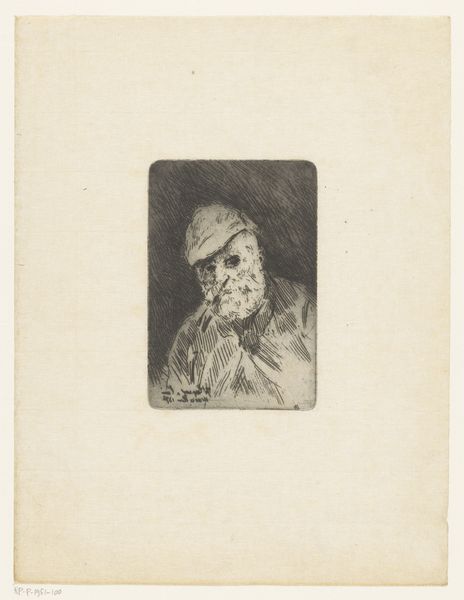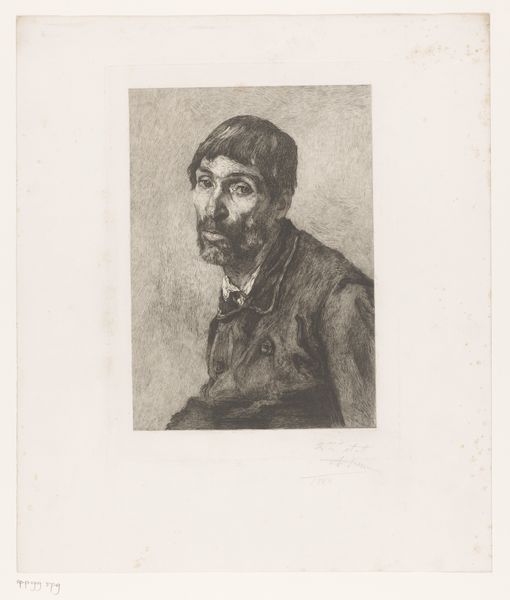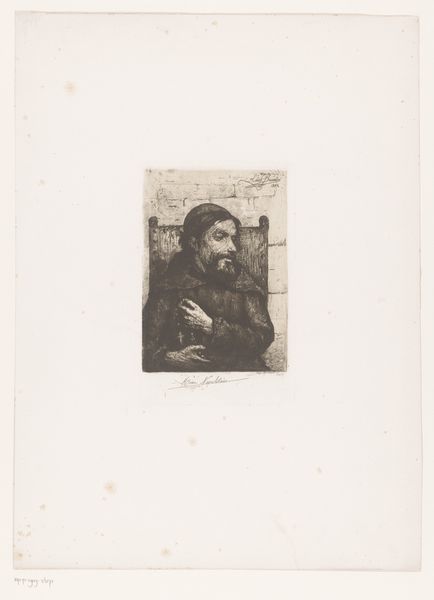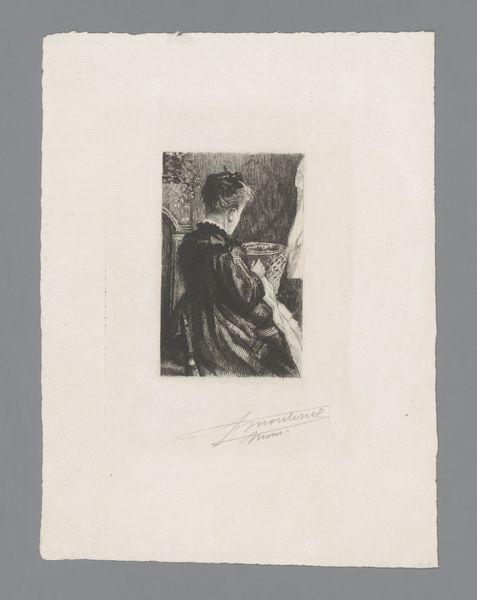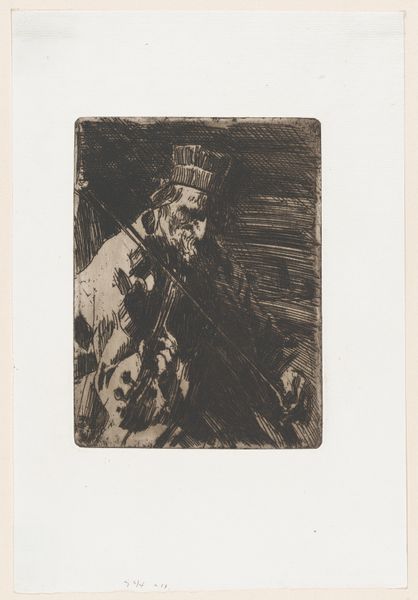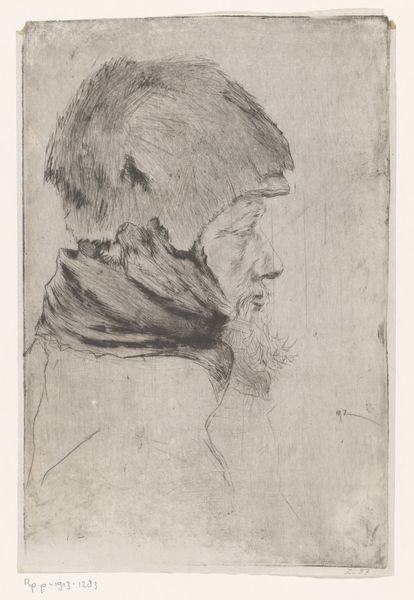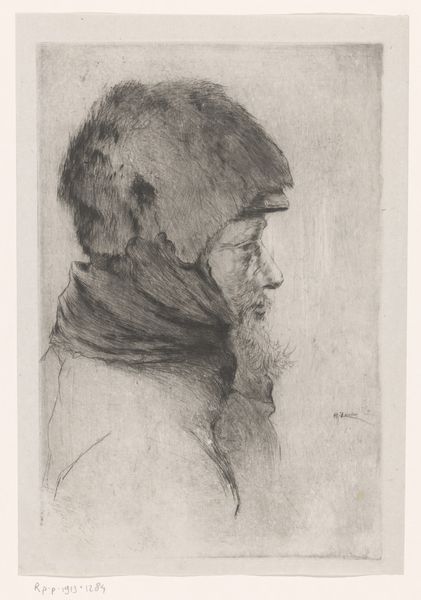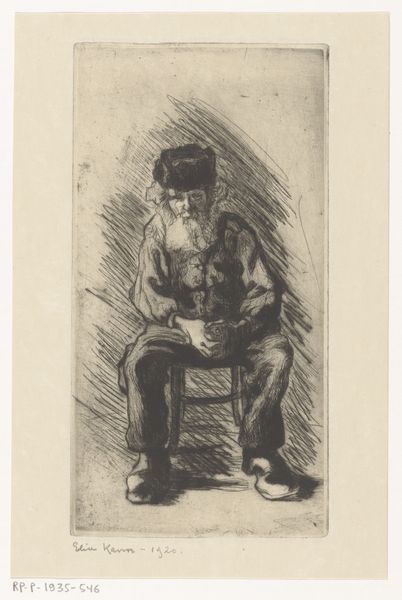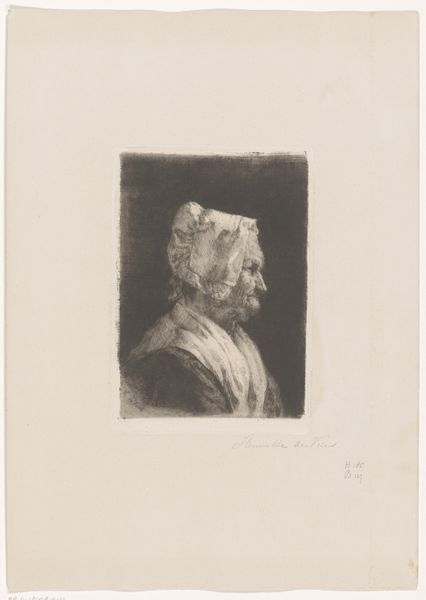
print, etching
#
portrait
#
self-portrait
# print
#
etching
Dimensions: height 250 mm, width 170 mm
Copyright: Rijks Museum: Open Domain
Charles Verlat created this self-portrait with etching techniques, but it is undated. Verlat was Belgian and worked throughout the 19th century. As an academic painter, Verlat ran counter to dominant social and aesthetic trends. Etching had a long and distinguished history in European art, but it was often associated with printmaking, a commercial enterprise that Verlat rejected. This self-portrait shows Verlat in the guise of a bourgeois gentleman, with his neatly trimmed beard and formal attire, that speaks to the social conventions of his time. To truly understand this piece, we must consider the role of art academies in 19th-century Europe. These institutions shaped artistic tastes and determined which artists would succeed. Verlat's position as a professor at the Antwerp Academy is critical to the reception of this image and one can research further through historical archives. Ultimately, this self-portrait reflects the complex relationship between the artist, the academy, and the broader social and cultural context of 19th-century Belgium.
Comments
No comments
Be the first to comment and join the conversation on the ultimate creative platform.

